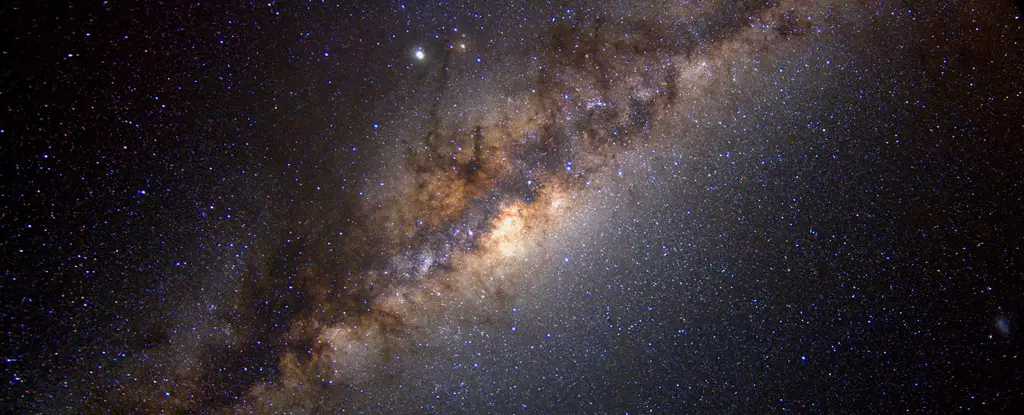Determining the true mass of the Milky Way has always been a challenging task, comparable to a single cell attempting to calculate the mass of an entire human body. However, a groundbreaking study using the Gaia spacecraft’s data has recently provided a more accurate estimation of our galaxy’s mass, leading to a surprising revelation: the Milky Way is significantly smaller than previously believed.
To estimate the mass of a galaxy, scientists often analyze its rotation curve. By measuring the speeds of stars at varying distances from the galactic center, it is possible to establish a relationship between orbital speed and the mass within a star’s orbit. Unfortunately, due to our location within the Milky Way, obtaining a comprehensive view of the galaxy’s stars is challenging. The presence of dense gas and dust in the galactic center obstructs our vision, necessitating alternative methods for measuring the rotation curve.
Unveiling Hidden Clues
One such alternative is employing neutral hydrogen, which emits faint light at a wavelength of approximately 21 centimeters. Although not as precise as stellar measurements, using neutral hydrogen has provided astronomers with a rough estimate of the Milky Way’s mass. Additionally, the motions of globular clusters in the Milky Way’s halo have been studied to gain insights into the galaxy’s mass. Combining these observations yielded a previous best estimate of around a trillion solar masses for the Milky Way.
Unlocking the Secrets with Gaia
In the latest endeavor, scientists turned to the third data release of the Gaia spacecraft, which offers invaluable information on the positions and motions of over 1.8 billion stars. While this represents a fraction of the estimated total stars in the Milky Way, it is still a significant number for calculating a more precise rotation curve. Leveraging this dataset, the research team was able to identify what is known as the Keplerian decline – the point at which the speeds of stars decrease in accordance with Kepler’s laws due to the concentration of mass towards the galactic center.
Astonishing Findings
The team’s meticulous analysis of the Gaia data yielded unexpected results. The best fit to the rotation curve indicated a mass of approximately 200 billion solar masses, which is only one-fifth of previous estimates. Even the upper limit places the Milky Way’s mass at 540 billion solar masses, significantly lower than anticipated. Consequently, this revelation also implies that the Milky Way harbors less dark matter than initially believed, considering the known regular matter in the galaxy.
The revised estimation of the Milky Way’s mass has significant implications for our understanding of both our home galaxy and the broader field of cosmology. The findings challenge existing models and call for a reassessment of the role played by dark matter in shaping the structure of the Milky Way. Further investigations utilizing Gaia data and other advanced astronomical techniques will be crucial to refine our understanding of the galaxy’s mass and its implications for our understanding of the universe.
The mass of the Milky Way has long been a subject of scientific inquiry, and recent advancements in astronomical data analysis have allowed for a more accurate estimation. The surprising revelation that the Milky Way is considerably lighter than previously thought raises questions about our understanding of the galaxy’s composition and highlights the need for further exploration and research. By continually pushing the boundaries of our knowledge, scientists can unlock the secrets of our universe and redefine our place within it.


Leave a Reply